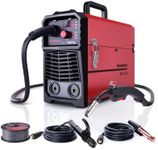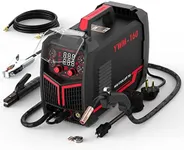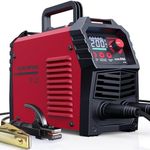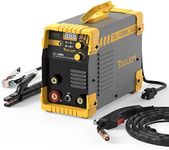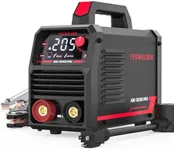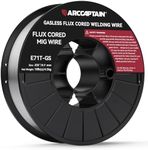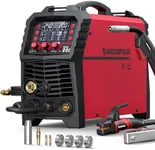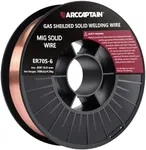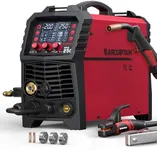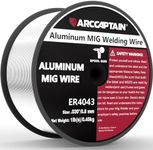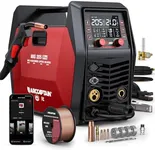Buying Guide for the Best Beginners Welder
Choosing your first welder can feel overwhelming, but with a little understanding of the key features, you can find a machine that matches your needs and helps you learn safely and effectively. Start by thinking about the types of projects you want to tackle, the materials you'll be working with, and how much portability you need. The right welder for a beginner should be easy to use, safe, and versatile enough to grow with your skills.Welding Process (MIG, TIG, Stick)The welding process refers to the method the welder uses to join metals. MIG (Metal Inert Gas) is generally the easiest for beginners, offering simple setup and clean welds, making it great for learning and light projects. TIG (Tungsten Inert Gas) provides more precision but is harder to master and usually not recommended for absolute beginners. Stick welding is versatile and works well outdoors or on rusty materials, but it can be messier and harder to control for new users. Think about what you want to weld and how much time you want to spend learning—MIG is usually the best starting point for most beginners.
Input Power (Voltage)Input power is the type of electrical supply the welder needs. Most home welders use either 110-120V (standard household outlets) or 220-240V (higher power, like for dryers). Lower voltage welders are more convenient for beginners since they can be plugged in almost anywhere, but they may be limited to thinner materials. Higher voltage welders can handle thicker metals but require special outlets. If you plan to work on small projects at home, a 110-120V welder is usually sufficient.
Amperage RangeAmperage range tells you how much power the welder can deliver, which affects the thickness of metal you can weld. Lower amperage is good for thin materials, while higher amperage is needed for thicker metals. Beginners should look for a welder with a flexible range that covers the types of projects they want to do—something that can handle both light sheet metal and slightly thicker pieces is ideal for learning.
Duty CycleDuty cycle is the amount of time a welder can operate continuously before it needs to cool down, usually measured as a percentage of a 10-minute period. For example, a 20% duty cycle at a certain amperage means you can weld for 2 minutes and then must let the machine rest for 8 minutes. Beginners often work in short bursts, so a lower duty cycle is usually fine, but if you plan to do longer welds, look for a higher duty cycle.
PortabilityPortability refers to how easy it is to move the welder around. Smaller, lighter welders are easier to carry and store, which is helpful if you have limited space or want to work in different locations. If you plan to keep your welder in one spot, size and weight may not matter as much, but for most beginners, a compact and portable machine is more convenient.
Ease of Use and ControlsEase of use covers how simple the welder is to set up and operate. Look for clear controls, easy-to-read displays, and straightforward instructions. Some welders have features like automatic settings or guides that help beginners get started quickly. If you're new to welding, these user-friendly features can make learning much less intimidating.
Safety FeaturesSafety features include things like thermal overload protection, which shuts the welder off if it gets too hot, and good insulation to prevent electric shocks. For beginners, these features are especially important to help prevent accidents and protect both you and your equipment as you learn.
